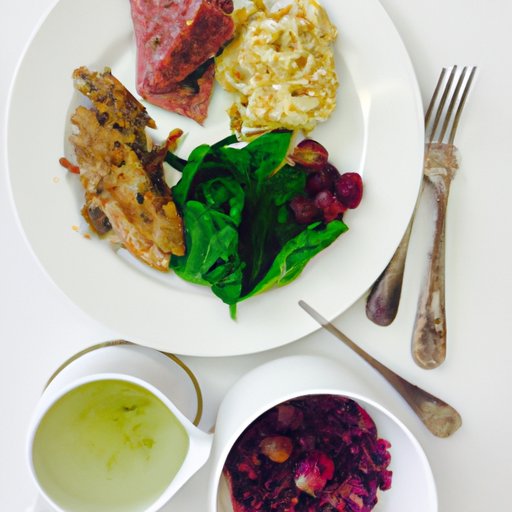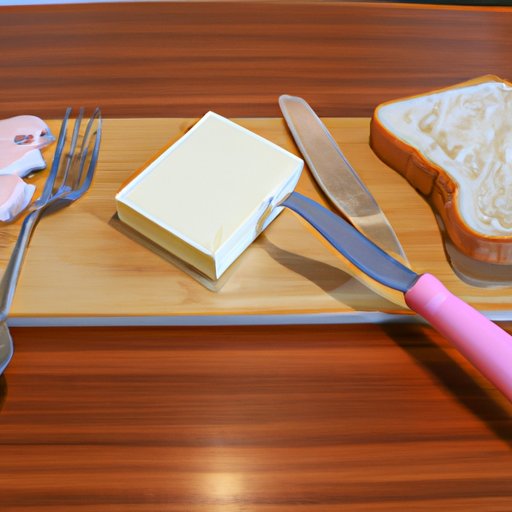
Introduction
Gastric sleeve surgery has become an increasingly popular weight loss solution for individuals struggling to lose weight through diet and exercise alone. The surgery involves removing a significant portion of the stomach, creating a smaller stomach pouch that limits the amount of food a person can eat, leading to significant weight loss. However, following gastric sleeve surgery, individuals face the challenge of transition to solid foods. In this article, we will explore the challenges of eating solid foods after gastric sleeve surgery and provide useful tips and recommendations to help you make a smooth transition.
Eating Solid Food After Gastric Sleeve: What to Expect and How to Adjust
Before diving into the details of eating solid foods after gastric sleeve surgery, it is essential to understand what the surgery entails and how it affects the digestive system. Gastric sleeve surgery involves removing a significant portion of the stomach, creating a smaller stomach pouch that limits the amount of food a person can eat. This leads to significant weight loss, but it also creates significant challenges when transitioning to solid foods.
The recommended timeline for transitioning to solid food after surgery is usually about six weeks. During this time, it is essential to gradually introduce solid foods, starting with soft foods, and eventually, with time, introducing firmer foods. To adjust to eating solid foods, it is advisable to chew slowly and thoroughly, eat small portions, and avoid certain foods, such as tough meats or raw vegetables.
Breaking the Rules: The Consequences of Eating Solid Food After Gastric Sleeve Surgery
Despite the recommended timeline for transitioning to solid foods after surgery, some individuals may be tempted to break the rules and consume solid foods earlier than recommended. Unfortunately, this can lead to significant complications, such as vomiting, nausea, and stomach pain. Long-term risks of not following the recommended diet after gastric sleeve surgery include weight regain and nutritional deficiencies.
Navigating the Transition to Solid Foods Post Gastric Sleeve: Tips and Tricks
To make the transition to solid food smoother, it is essential to introduce new foods gradually, keep a food journal, and reach out to healthcare professionals and support groups. As you reintroduce solid foods into your diet, you may experience discomfort, such as stomach pain or nausea. Be sure to listen to your body and adjust appropriately.
The Pros and Cons of Eating Solid Food After Gastric Sleeve Surgery
Incorporating solid foods into the diet after gastric sleeve surgery has several benefits, including increased satiety and variety. However, it is important to be aware of the potential risks and downsides of eating solid food after surgery, such as reduced nutrient absorption and complications. These risks highlight the importance of following the recommended diet post-surgery and seeking medical advice when necessary.

Surviving Solid Foods After Gastric Sleeve: A Guide to Preventing Complications
To prevent complications when eating solid foods post-surgery, it is essential to practice portion control, meal planning, and supplement use. Additionally, be sure to listen to your body and seek medical attention if any issues arise. Support from healthcare professionals and support groups is also essential during this time to ensure a successful transition to a solid food diet.
Reintroducing Solid Foods After Gastric Sleeve Surgery: How to Do It Safely and Effectively
You can reintroduce solid foods into your diet post-gastric sleeve surgery by following a step-by-step guide on when to introduce solid foods and what portion size to start with. Building a healthy and balanced diet that meets nutritional requirements post-surgery is essential. Consult with your healthcare professional to ensure you stay on track with your dietary needs.
Conclusion
Eating solid foods post gastric sleeve surgery can be challenging, but with proper guidance and support, it can be a smooth transition. Remember to follow the recommended diet, introduce new foods gradually, and listen to your body. Reintroducing solid foods can be a positive step towards a healthy and balanced diet, but it is essential to seek medical advice and support when necessary. Remember, healthy habits and lifestyle changes lead to successful weight loss and overall health improvement.




